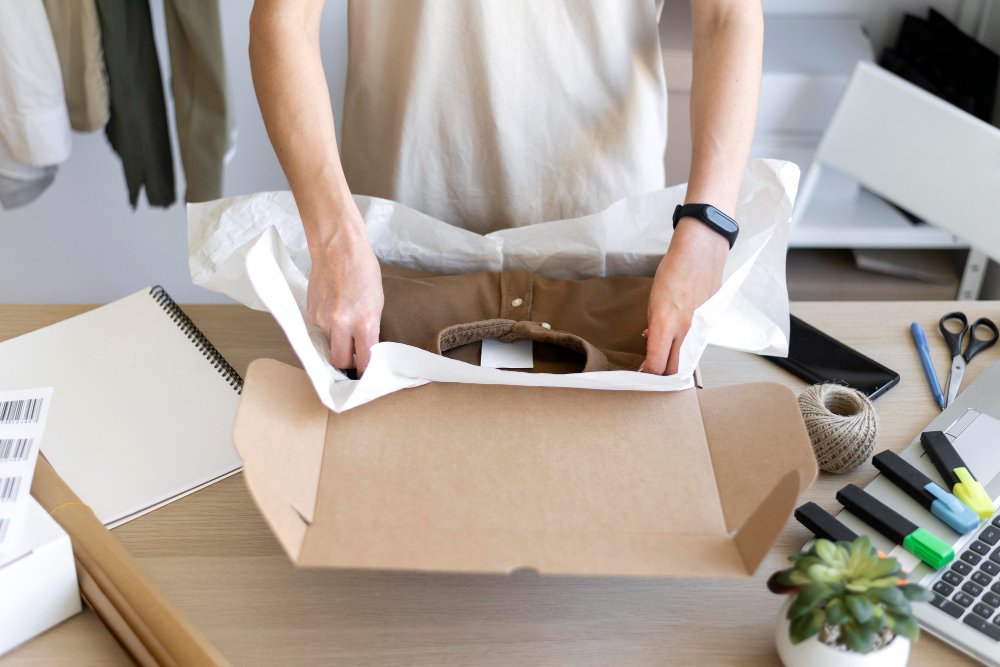Sustainability is no longer a marketing buzzword it’s a consumer demand. More than ever, shoppers are paying attention to how brands package their products, and many prefer to support businesses that make eco-conscious choices. Packaging is often the first physical touchpoint between a customer and a brand, which makes it a powerful opportunity to show environmental responsibility.
In this guide, we’ll explore the top eco-friendly packaging trends shaping industries today and how businesses big and small can adopt them to meet customer expectations and build stronger brand loyalty.
Why Eco-Friendly Packaging Matters for Brands
Eco-friendly packaging is about more than reducing environmental impact; it’s about aligning with shifting consumer values. A growing number of people now seek products that come in recyclable, reusable, or biodegradable packaging. When brands invest in greener solutions, they reduce waste while strengthening their reputation.
There’s also a financial incentive. Businesses that embrace sustainability often see improved customer retention, greater brand loyalty, and even reduced long-term costs. Instead of excessive materials and single-use plastics, companies are moving toward custom packaging solutions that combine functionality with environmental responsibility.
Trend #1: Biodegradable & Compostable Materials
One of the biggest trends in sustainable packaging is the use of biodegradable and compostable materials. Instead of plastics that take centuries to break down, businesses are adopting packaging made from cornstarch, mushroom mycelium, or sugarcane bagasse. These materials decompose naturally, leaving minimal impact on the planet.
Biodegradable and compostable packaging works especially well for the food industry and small e-commerce products. It provides durability during shipping while giving eco-conscious customers the satisfaction of knowing they’re not contributing to long-term waste. As technology advances, more businesses are expected to integrate these materials into their everyday packaging.
Trend #2: Minimalist & Low-Waste Design
Minimalism has become a hallmark of sustainable packaging. The concept is simple: use less material and reduce waste wherever possible. By right-sizing boxes to fit products snugly, businesses minimize the need for fillers like bubble wrap or excess cardboard.
Design-wise, minimalism translates to fewer dyes and simpler branding. This not only saves resources but also conveys authenticity. A clean, pared-back design often resonates more strongly with eco-conscious consumers who value honesty over flashy packaging.
Minimalist approaches are effective across packaging formats, from mailer boxes used in subscription services to luxury options like rigid box packaging that require careful design choices to balance aesthetics and sustainability.
Trend #3: Reusable & Multi-Purpose Packaging
Another eco-friendly trend that’s gaining traction is packaging designed to be reused. Instead of being discarded, these packages serve a second life as storage, gift boxes, or home organization solutions.
Rigid boxes are a prime example they’re durable enough to be repurposed, extending their usefulness beyond a single purchase. A cosmetic brand might offer a box that doubles as a jewelry organizer, while a tech company could design packaging sturdy enough to store cables or accessories.
For small businesses, this approach not only reduces waste but also increases brand visibility. Every time a customer reuses the box, they’re reminded of the brand that provided it.
Trend #4: Innovative Printing & Sustainable Inks
Traditional printing methods often use chemical-heavy inks that harm the environment. In contrast, brands are turning to eco-friendly alternatives like soy-based or water-based inks. These options produce vibrant colors without compromising recyclability.
Digital printing is also on the rise because it creates less waste and requires fewer resources compared to traditional offset methods. Many brands combine sustainable inks with natural tones and earthy aesthetics to align their packaging with eco-conscious values.
This trend allows companies to keep packaging visually appealing while maintaining their commitment to sustainability.
Trend #5: Smart Packaging with Eco Messaging
Smart packaging doesn’t just protect a product it communicates a story. Increasingly, brands are using packaging to share their sustainability efforts with customers. This might include QR codes linking to recycling guides, or labels that explain how the packaging was made and how to dispose of it responsibly.
Consumers value transparency. When businesses share their eco-friendly journey through packaging, they create a stronger connection with customers. Something as simple as printing disposal instructions on the inside of a box can reinforce the brand’s commitment to sustainability while educating buyers.
How Brands Can Adopt These Trends
Whether you’re a startup or a global company, adopting eco-friendly packaging doesn’t require a complete overhaul overnight. Small steps can make a big difference. Start by choosing recyclable or compostable mailers for e-commerce deliveries. Experiment with minimalist design by using fewer materials or incorporating kraft finishes.
Premium brands can explore sustainable versions of rigid box packaging, ensuring that luxury doesn’t come at the planet’s expense. Partnering with eco-conscious suppliers and clearly communicating your green initiatives on packaging builds trust with customers and sets your brand apart in competitive markets.
Conclusion
Eco-friendly packaging is more than a passing trend it’s becoming the industry standard. From biodegradable materials and minimalist designs to reusable solutions and sustainable printing, today’s innovations allow brands to reduce waste while elevating their identity.
Customers want to feel good about the purchases they make, and sustainable packaging gives them that reassurance. Whether you’re shipping products in simple mailer boxes or designing premium rigid box packaging for luxury goods, the choices you make impact not just your brand image, but also the planet.
By embracing eco-conscious packaging strategies, businesses can align with consumer values, reduce their environmental footprint, and secure long-term loyalty in an increasingly sustainability-driven market.







